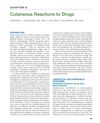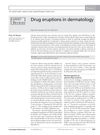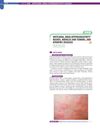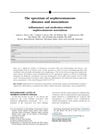Incidence of Adverse Cutaneous Drug Reactions in a Mexican Sample: An Exploratory Study on Their Association to Tumor Necrosis Factor Alpha TNF2 Allele
March 2009
in “
Journal of the European Academy of Dermatology and Venereology
”
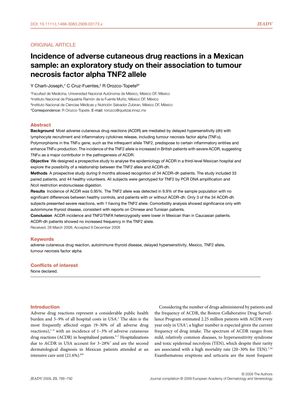
TLDR Mexican patients had a lower incidence of skin reactions to drugs and no significant link between these reactions and the TNF2 gene variant.
The study conducted in a Mexican hospital over a 9-month period found an incidence of adverse cutaneous drug reactions (ACDR) of 0.95% among 3,377 hospitalized patients, which is lower than the incidence reported in Caucasian populations. The most common reaction was exanthematous eruption, mainly from antibiotics. Women had a slightly higher incidence of ACDR, with a notable frequency of acneiform eruptions due to steroid use. The study also explored the association between ACDR and the TNF2 allele of the TNFα gene but found no significant difference in the frequency of the TNF2 allele between patients with ACDR, paired patients without ACDR, and healthy volunteers. Only one severe ACDR patient had the TNF2 allele. The TNF2 allele was associated with autoimmune thyroid disease but not with ACDR. The study concluded that both the incidence of ACDR and the frequency of the TNF2 allele were lower in the Mexican sample compared to Caucasian patients, suggesting the importance of genetic factors in the occurrence of ACDR across different ethnicities.

